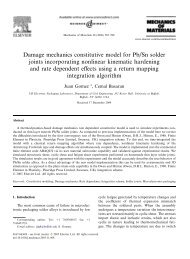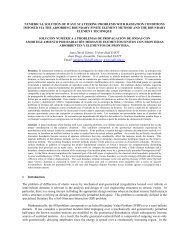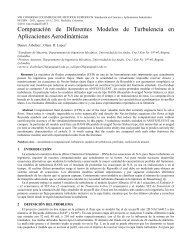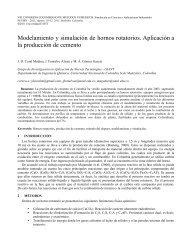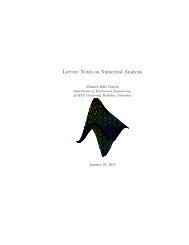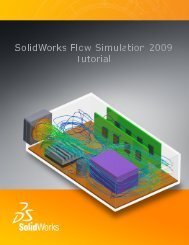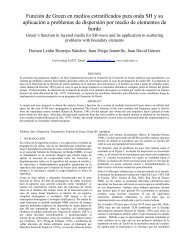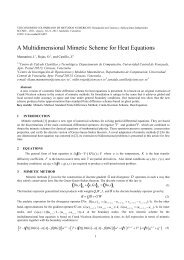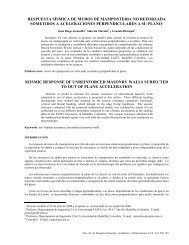Workbench Mechanical - Introduction to Contact
Workbench Mechanical - Introduction to Contact
Workbench Mechanical - Introduction to Contact
Create successful ePaper yourself
Turn your PDF publications into a flip-book with our unique Google optimized e-Paper software.
<strong>Workbench</strong> <strong>Mechanical</strong> - <strong>Introduction</strong> <strong>to</strong> <strong>Contact</strong><br />
… Symmetric/Asymmetric Behavior<br />
Training Manual<br />
• By default, <strong>Workbench</strong>-<strong>Mechanical</strong> uses Symmetric Behavior.<br />
– This means that the <strong>Contact</strong> surfaces are constrained from penetrating<br />
the Target surfaces and the Target surfaces are constrained from<br />
penetrating the <strong>Contact</strong> surfaces.<br />
• If the user wishes, Asymmetric Behavior can be used<br />
– For Asymmetric or Au<strong>to</strong>-Asymmetric<br />
Behavior, only the <strong>Contact</strong> surfaces are<br />
constrained from penetrating the Target<br />
surfaces.<br />
– In Au<strong>to</strong>-Asymmetric Behavior, the <strong>Contact</strong><br />
and Target surface designation may be<br />
reversed internally<br />
• Although it is noted that surfaces are<br />
constrained from penetrating each other,<br />
recall that with Penalty-based methods,<br />
some small penetration may occur.<br />
ANSYS, Inc. Proprietary<br />
© 2009 ANSYS, Inc. All rights reserved.<br />
3-25<br />
April 30, 2009<br />
Inven<strong>to</strong>ry #002659



